本文由Kimmel Eshkolot Architects授权mooool发表,欢迎转发,禁止以mooool编辑版本转载。
Thanks Kimmel Eshkolot Architects for authorizing the publication of the project on mooool, Text description provided by Kimmel Eshkolot Architects.
Kimmel Eshkolot Architects:赫茨尔山纪念馆是一个独特的纪念场所,它的存在是为了纪念这个国家所有阵亡的士兵,因此纪念馆内包含了他们所有人的名字。这是一个和平时代的希望工程。
Kimmel Eshkolot Architects:The Mount Herzl Memorial Hall is a unique place of commemoration. It’s raison d’etre is to be a memorial for all the fallen soldiers of the country, and thus contains all their names. It is a project of hope for peaceful times.
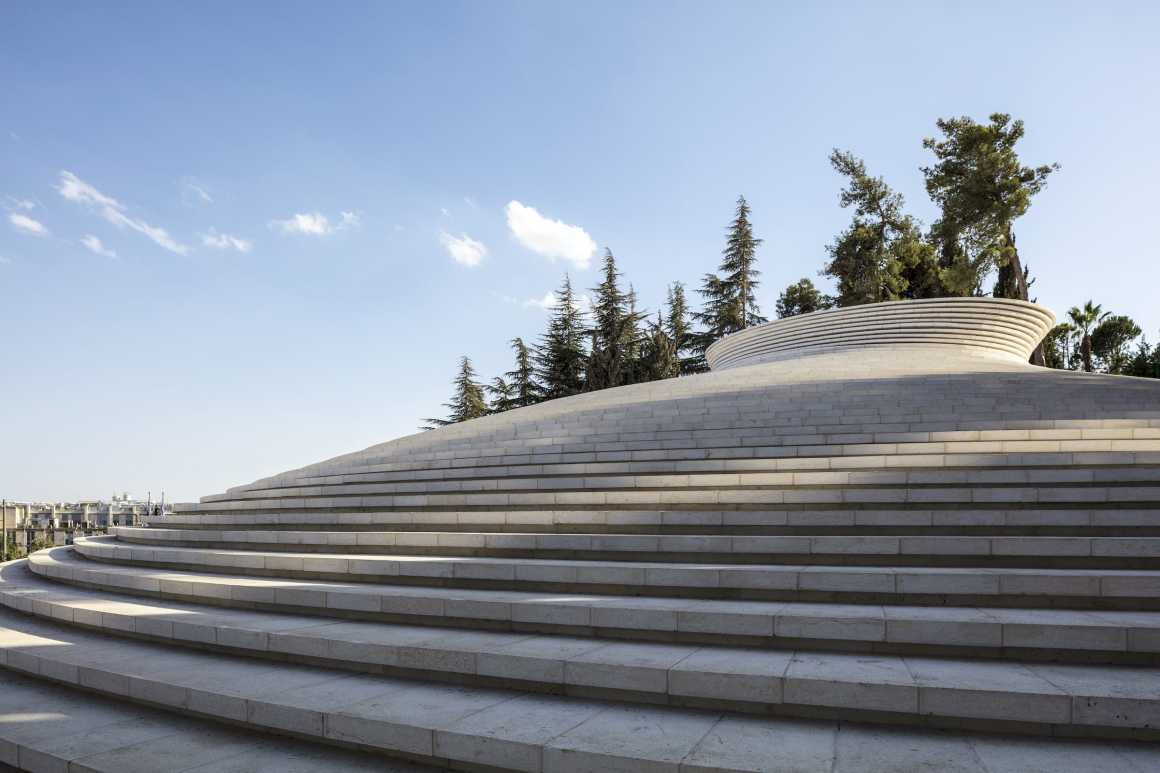
纪念馆的背景是平静的圣经风景,虽然毗邻如今繁忙的耶路撒冷街道,空间却是孤立和安静的。建筑是在山上“挖掘”出来的,为个人和集体纪念活动提供了一个亲密的空间。在大厅上方的这座山是用耶路撒冷的石头重建的弯曲地形。一个起伏的漏斗形砖结构将挖掘出的大厅向天空敞开。它不规则的旋涡形状创造了不断变化的光影,而屋顶的上端间隔的石板可允许气流和自然通风通过屋顶。
Set in a calm biblical scenery, but adjacent to the nowadays busy streets of Jerusalem, the space is isolated and quiet. It was excavated in the mountain to form an intimate space for both personal and collective experiences of commemoration. Above the hall, the mountain is reconstructed of curved topographies made of Jerusalem stone. An undulating funnel-shaped formation of bricks opens the excavated hall to the sky. Its irregular vortex shape floods the space with ever- changing natural light. At the upper end of the roof, spaced stone slabs are designed to allow air flow and natural ventilation through the roof.
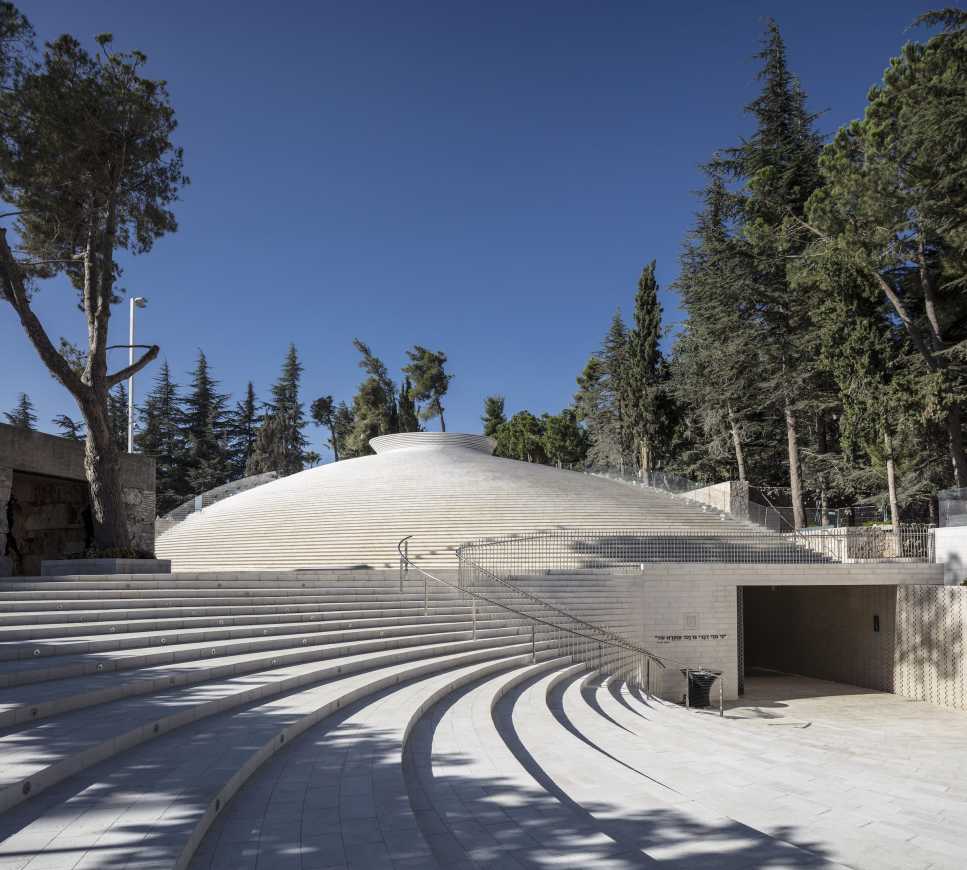
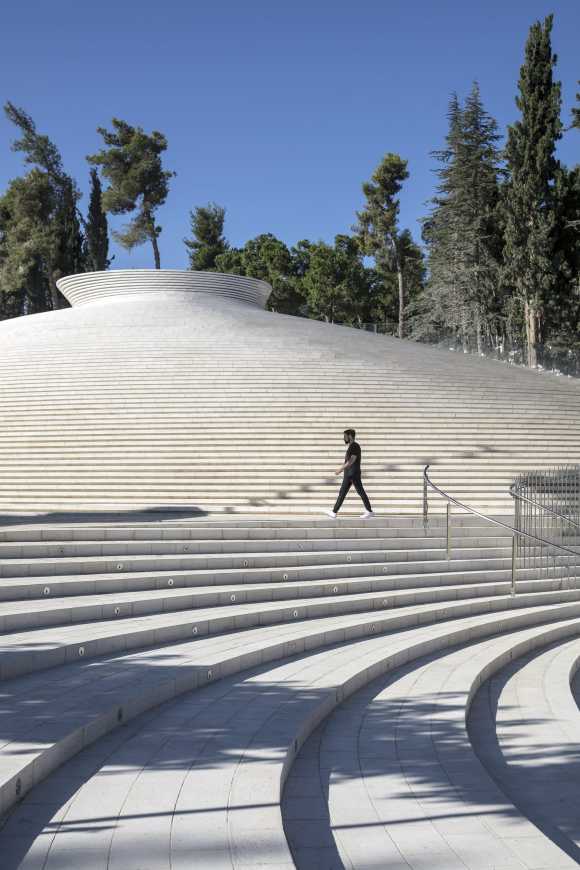
名字刻在石砖上,形成了一堵长长的名字墙,环绕着光之漏斗。沿着纪念馆的螺旋坡道向上走,这面墙由2.3万块砖砌成,每块砖上都刻着一名阵亡士兵的名字、他的死亡日期以及一根每年在这一天点亮的蜡烛。
The names, engraved on stone bricks, form a long Wall of Names, which wraps around the funnel of light. Following a spiral ramp up the memorial, the wall is built of 23,000 stone bricks, each engraved with the name of a fallen soldier, his death date, and a light-candle to be lit every year on that date.

漏斗的设计开发是与苏黎世联邦理工学院的研发团队共同完成的。它是由均匀挤压的铝砖构成,每一块都经过数控加工和标记,以便在现场获得其特定的接头位置组装成其不规则的独特结构。
The design development of the funnel was done in consultation with the research team R.O.B. at the ETH, Zurich. It is constructed of uniform extruded Aluminium bricks, each CNC’d and marked to get it’s specific joints’ locations, to allow for the assembly on site of the irregular, unique structure.



可持续性 Sustainability
该纪念碑最终被规划成为一个纪念馆,因此,设计重点在于创造一个几乎没有任何机械系统,并且接近完全可持续性功能的非建筑。
The Memorial was planned as a monument, and as such, the design focused on creating a non-building that can function almost without any mechanical systems and be close to entirely sustainable.

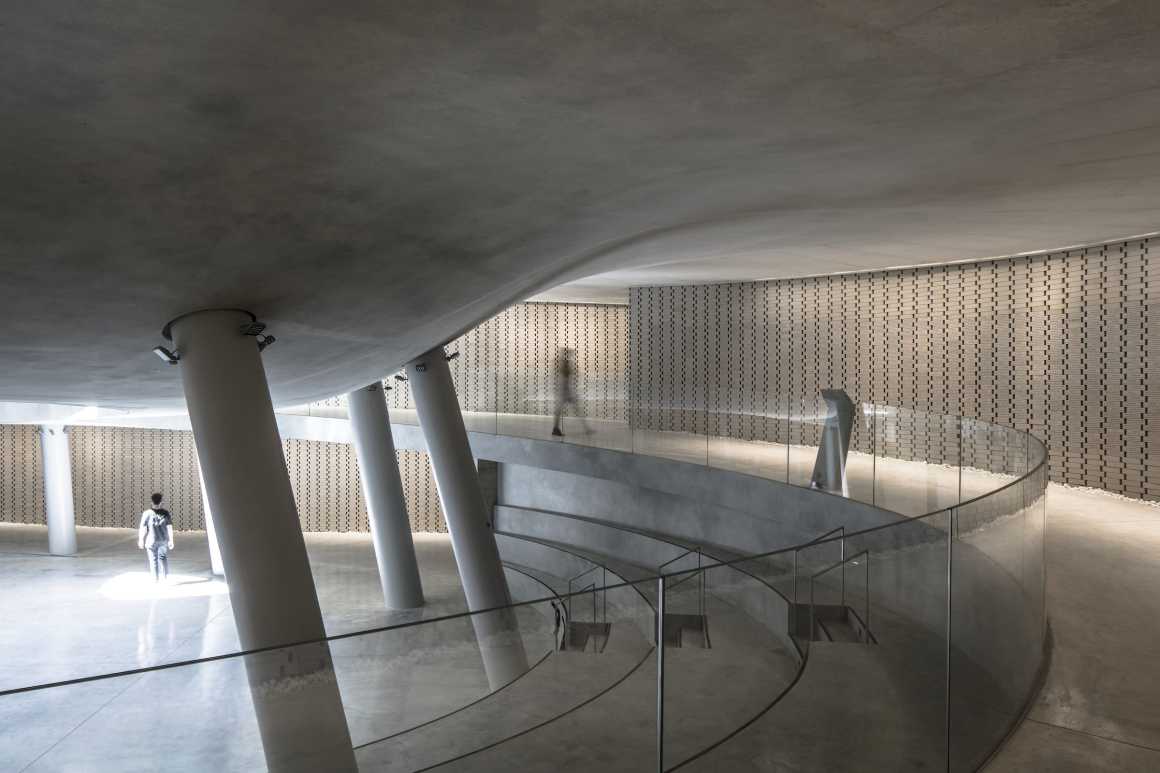
没有空调或电气通风系统,自然气流利用漏斗形状创造了极好的温度条件,通过间隔的石板将热空气从屋顶的上端排出,从而创造了通风的气流。白天不用电,自然光直接通过开口进入,并通过光漏斗巧妙地过滤,给空间创造了舒适的光线感。
There are no air-conditioning or electrical ventilation systems. Natural air flow creates excellent temperature conditions using the funnel shape to expel hot air out of the upper end of the roof through spaced stone slabs, thus creating air flow that ventilates the place. There is zero use of electricity for day-light. Natural light enters through the oculus and is subtly filtered through the funnel of light, flooding the space with pleasant light.
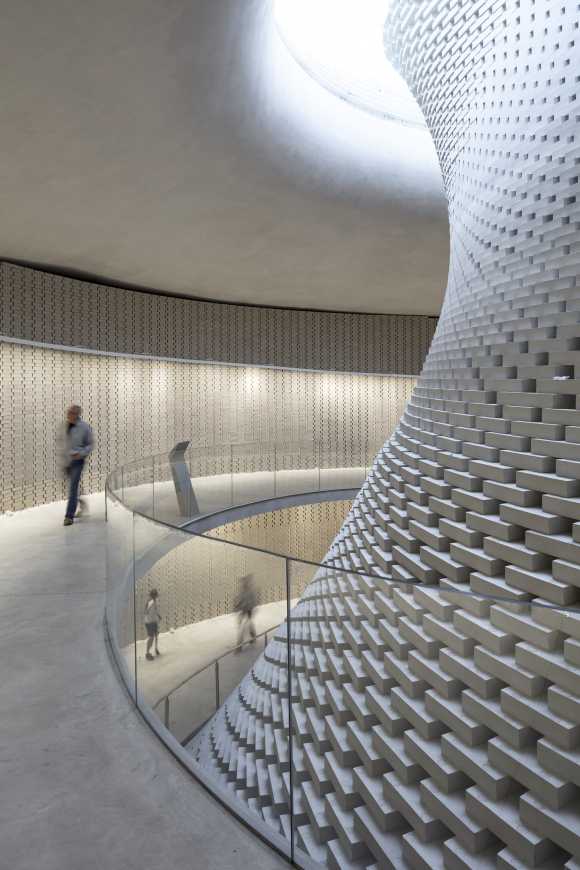
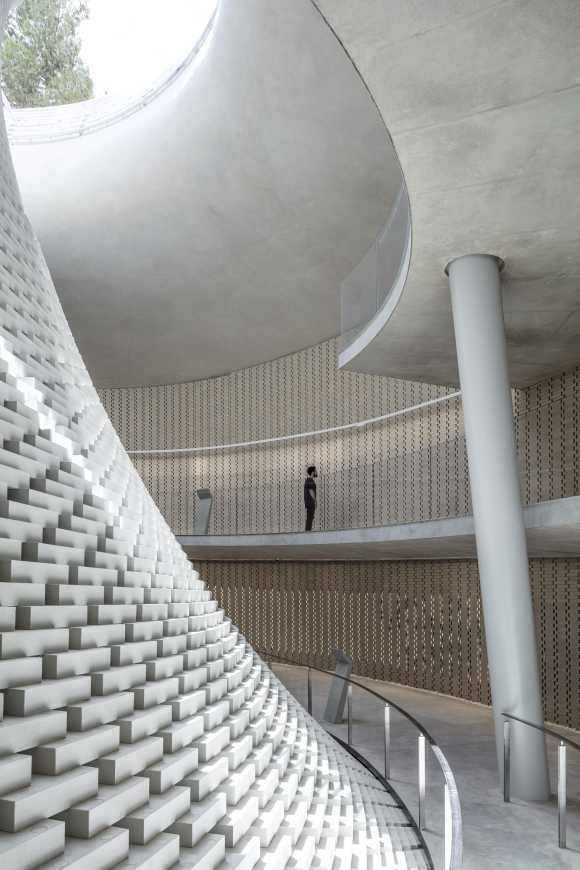
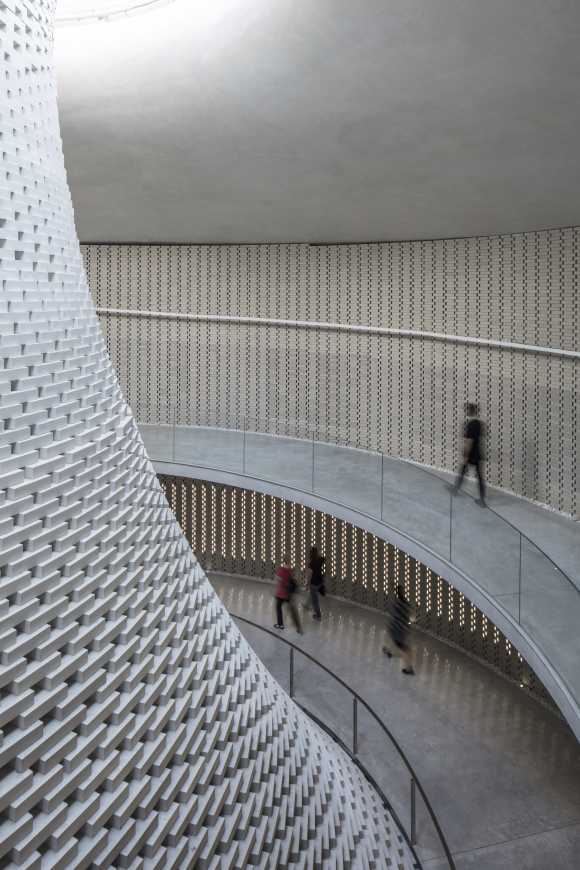
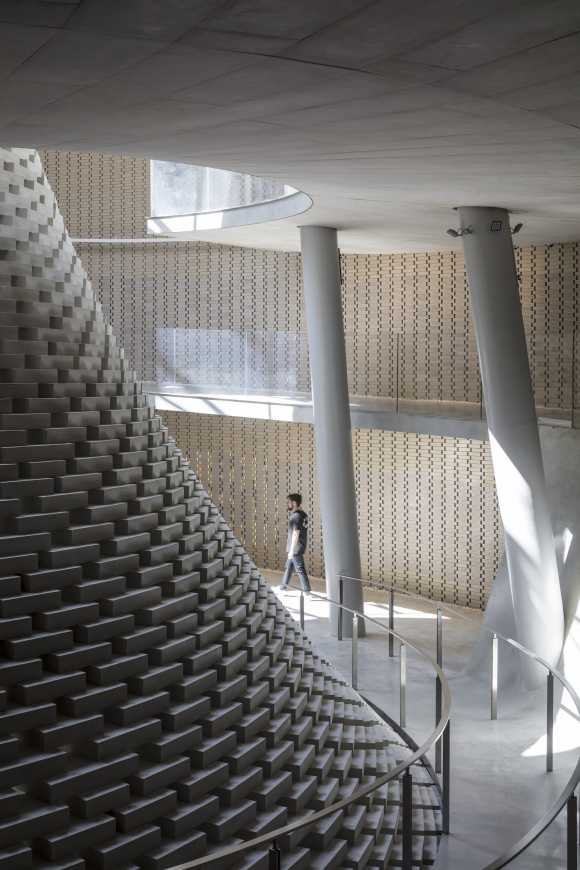


纪念馆因在山上开挖而成,获得了最佳的热条件。该结构的热质量整合在地下空间,保持一个稳定的温度。外部地形用浅色的耶路撒冷石覆盖,保护建筑免受辐射。
Excavated in the mountain, the Memorial Hall obtains optimal thermal conditions. The structure’s thermal- mass, integrated within the earth, keeps a steady temperature. The exterior topography was cladded with light-colored Jerusalem stone, which protects the building from radiation.
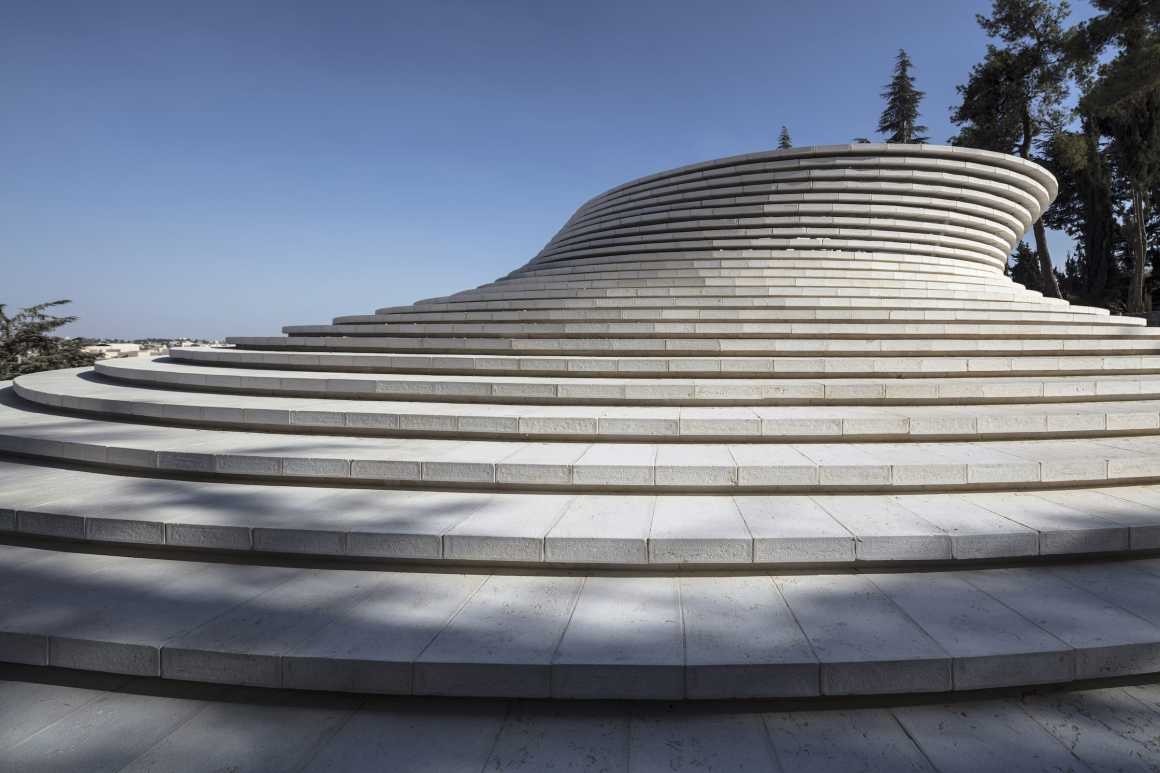
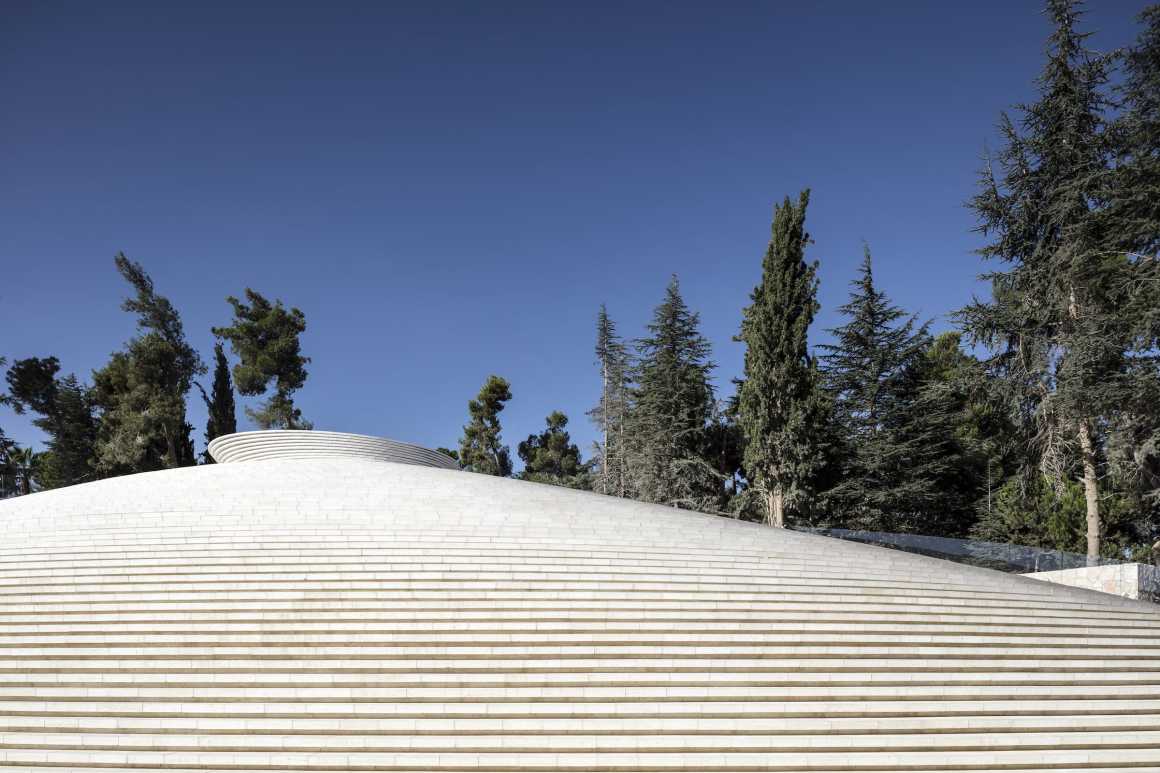
由于预算限制和可持续性的原因,使用耶路撒冷石等当地材料是设计过程中的一个关键因素,目的是将建筑与周围的耶路撒冷城市结合起来。它的目的是不强加于外部,并呼应邻近山脉和墓地的纹理。
Using local materials such as the Jerusalem-stone was a key element in the design process both for budget constraints and for sustainability reasons, aiming to integrate the building with the surrounding city of Jerusalem. It is intended to be unimposing from the exterior, and to echo the texture of the adjacent mountains and cemetery.
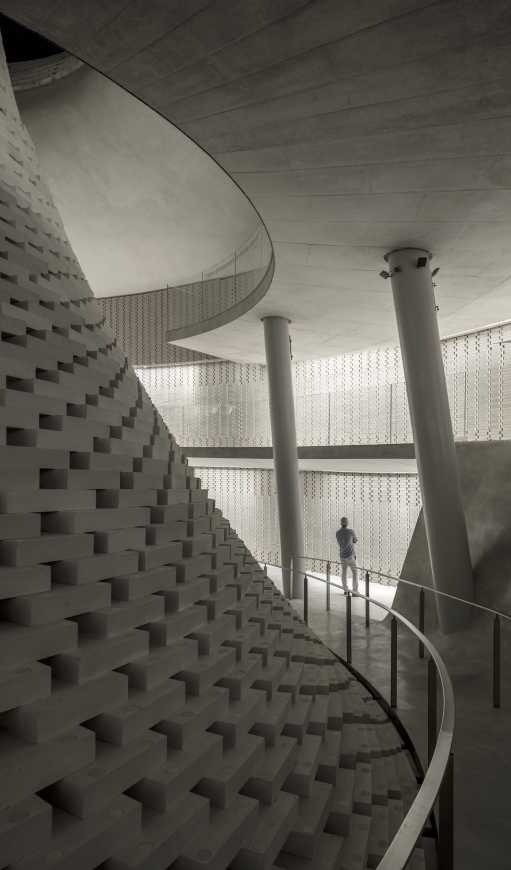
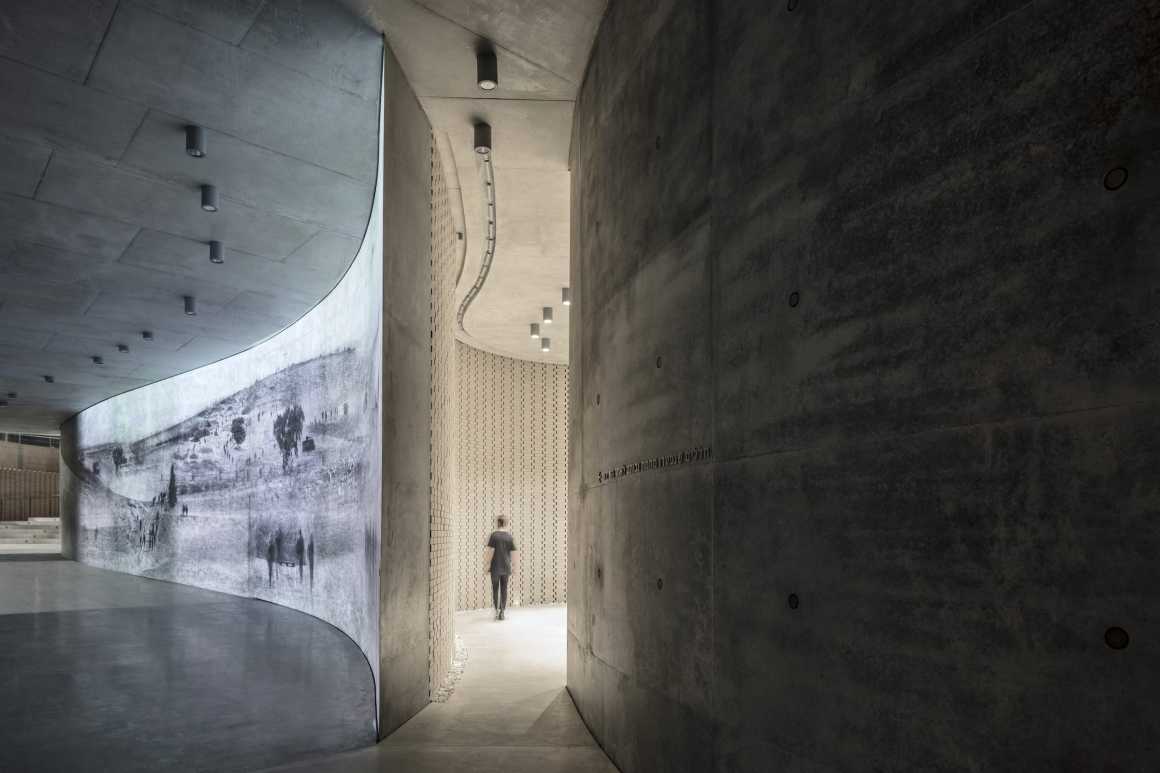
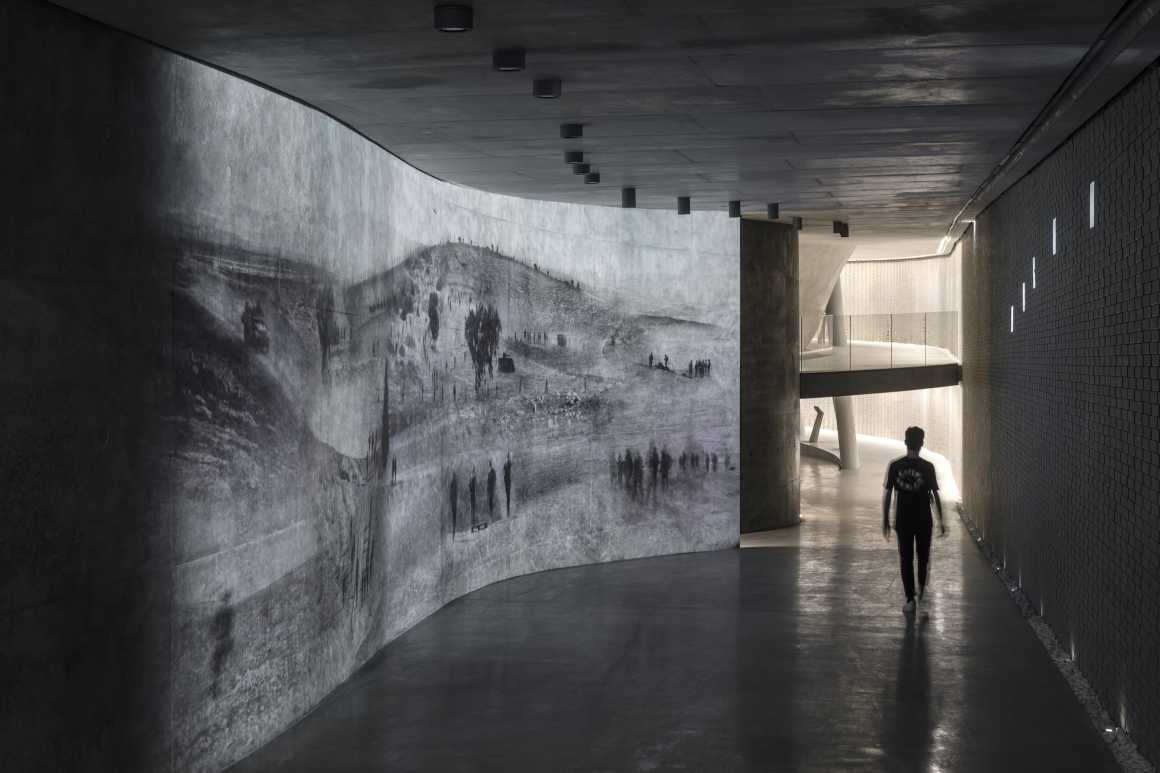
▼负一层平面图 Underground plan
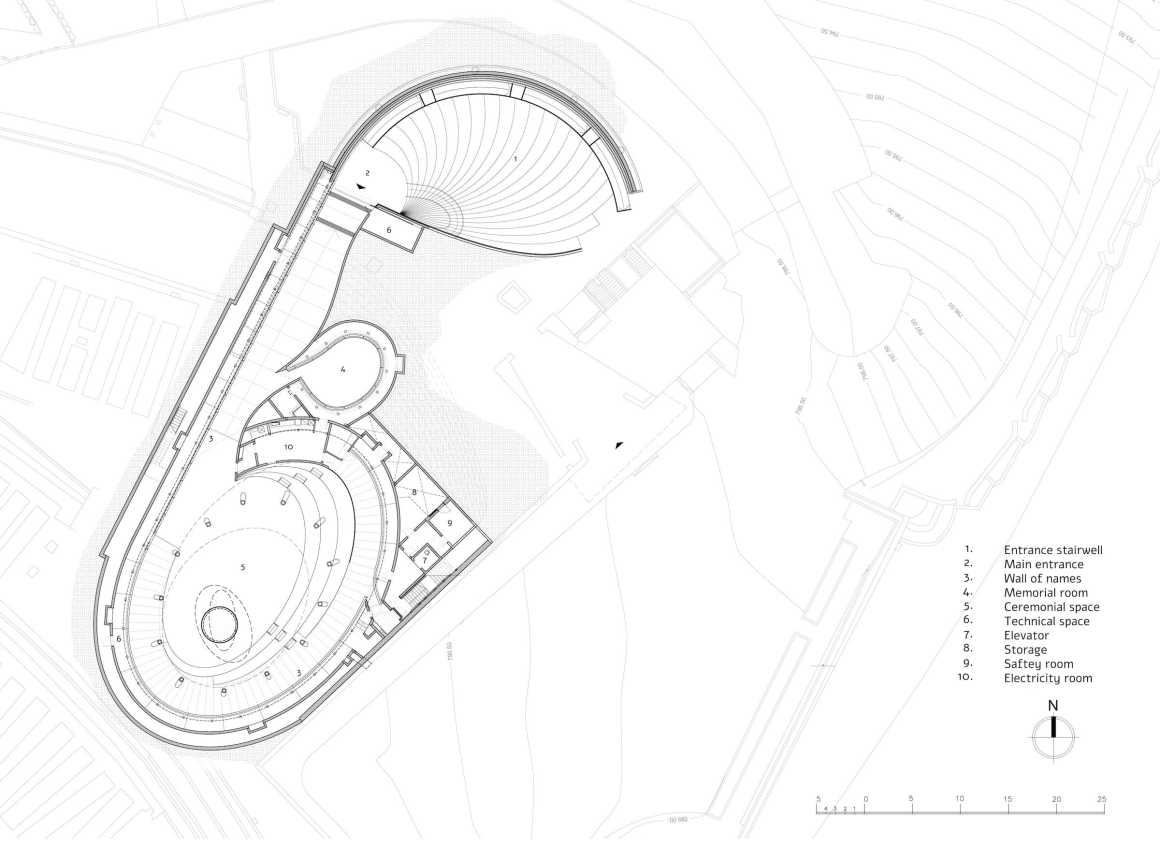
▼首层平面图 Ground floor plan
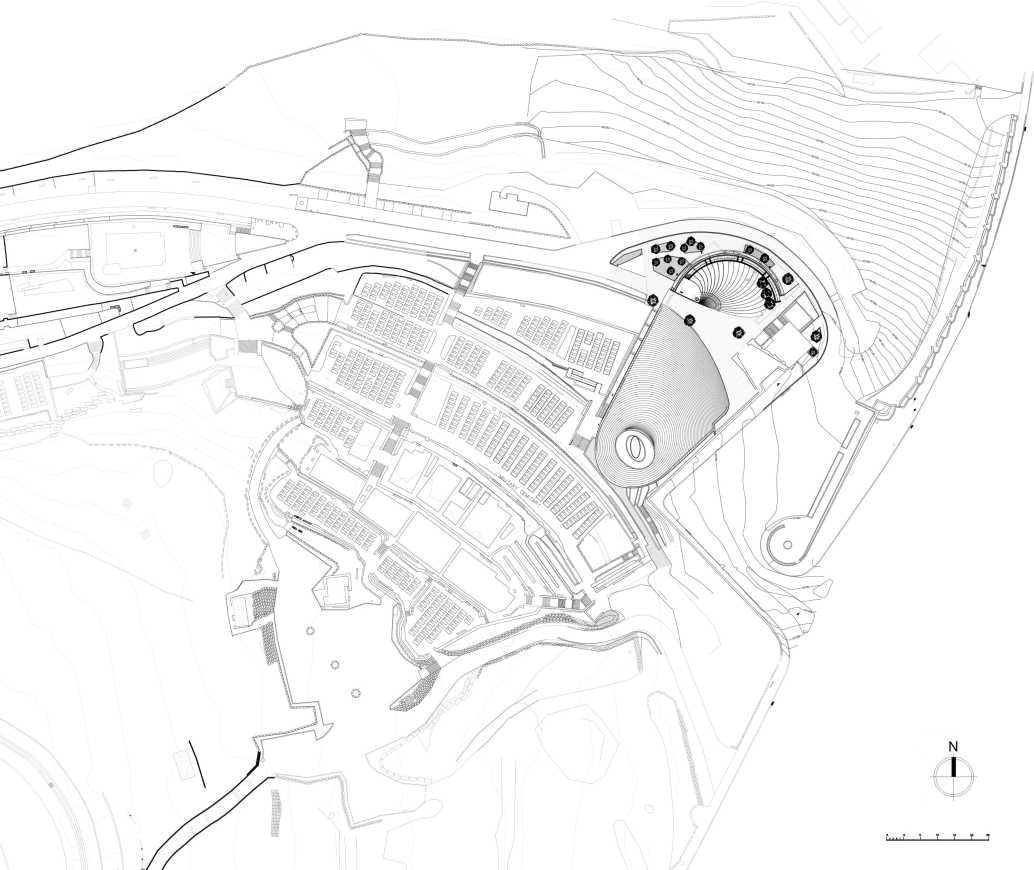
▼二层平面图 First floor plan
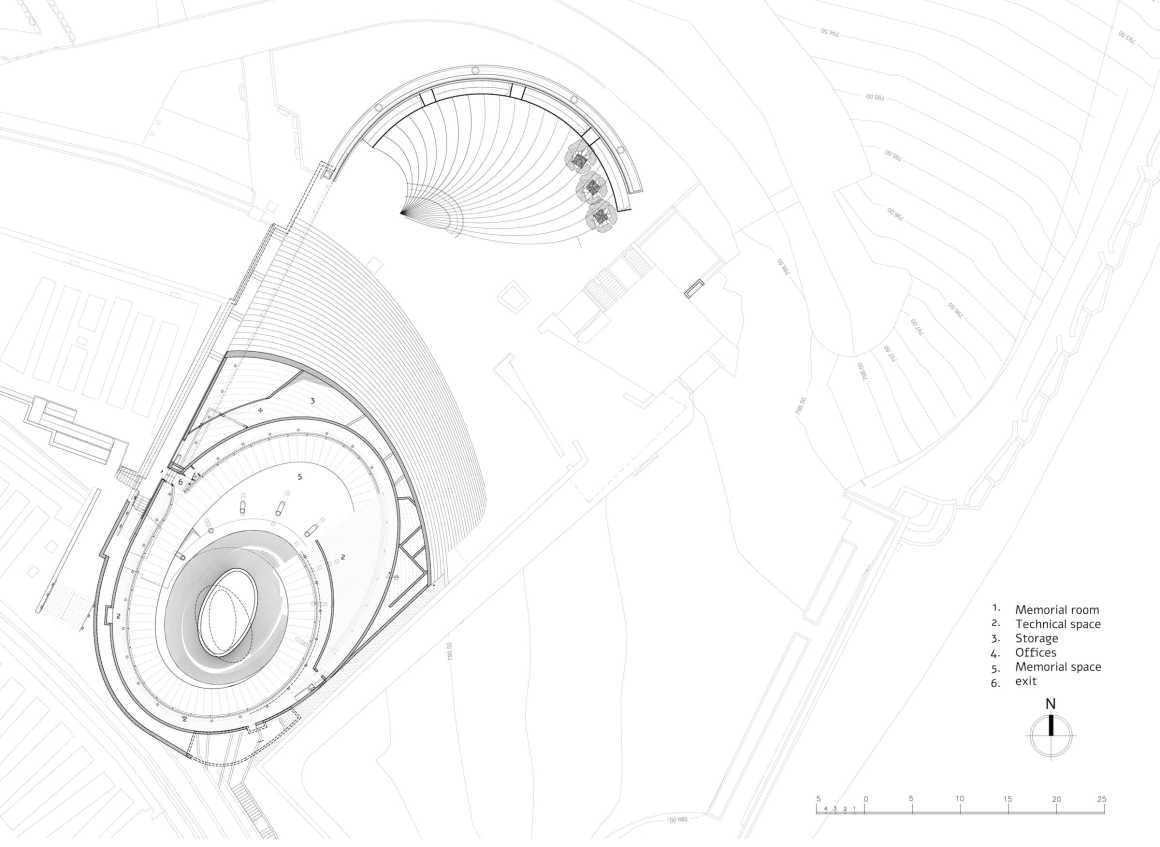
▼二层平面图 Second floor plan
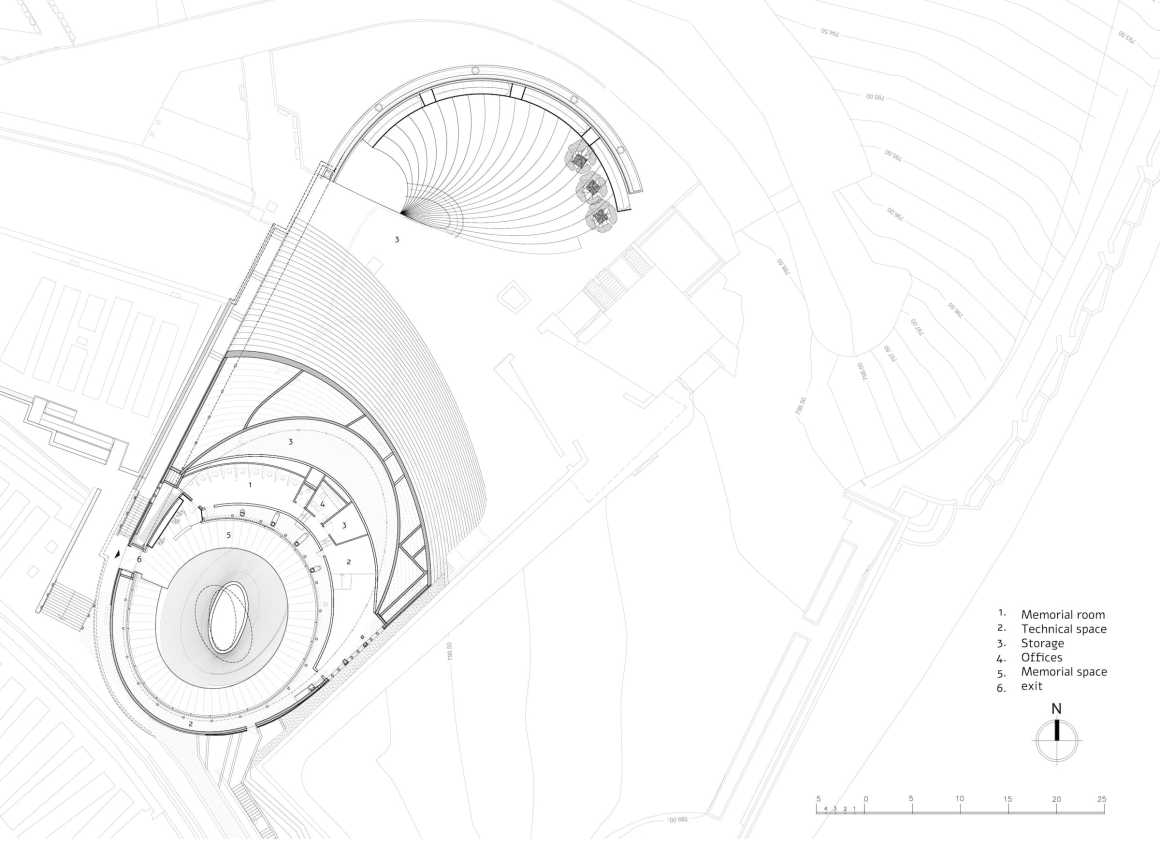
▼屋顶平面图 Roof plan

▼建筑模型 Scheme

▼建筑剖面 Sections
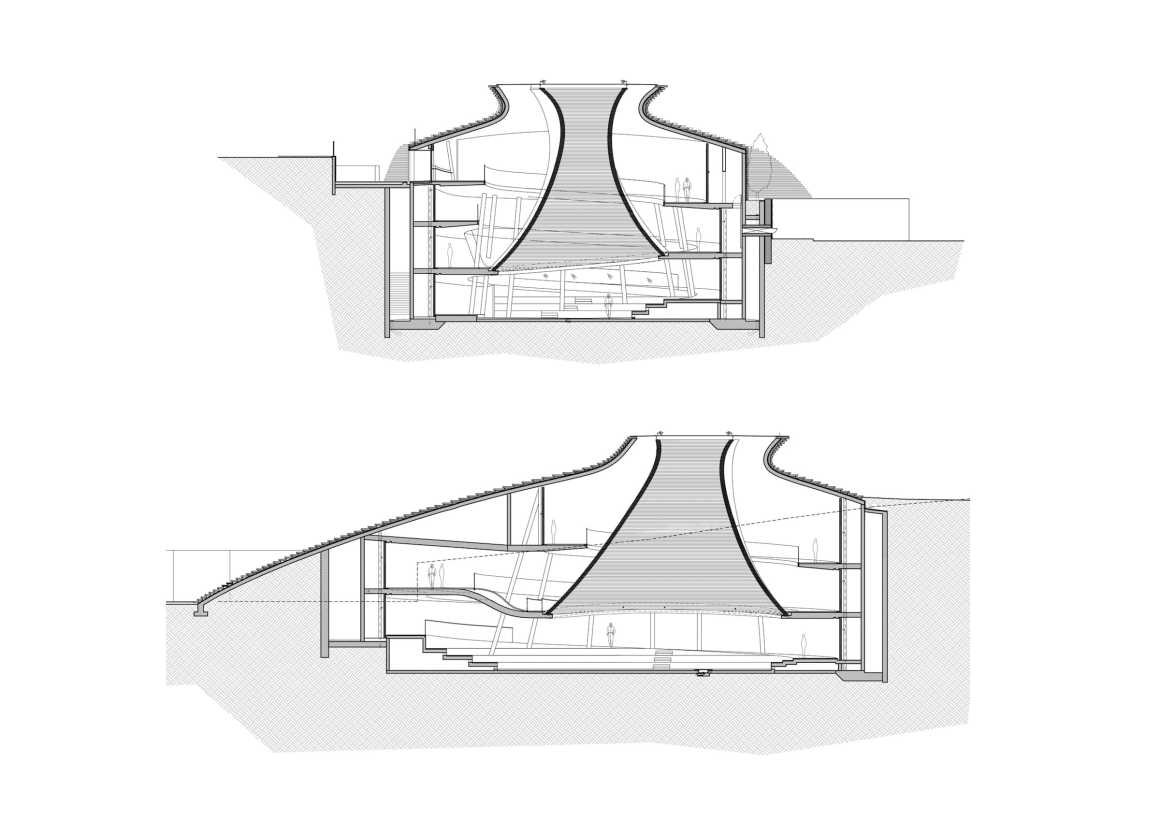
建筑设计: Kimmel Eshkolot Architects (与Kalush Chechick Architects合作)
建筑设计负责人: Etan Kimmel, Limor Amrani
摄影师: Amit Geron
客户: 国防部——家庭和纪念
结构工程: Haim & Yehiel Steinberg Structural Engineering
施工经理: E.D. Rahat Engineering Coordination and Management有限公司(Eliezer Rahat, Daniel Rahat)
设计阶段管理和协调员: Eran Garber E.S.L Engineers
承包商公司: Green Construction Ltd.
项目经理: Nadav Rubin
工程师: Eran Rosenberg
照明设计: Amir Brenner照明设计
光钟优化:
R/O/B技术-苏黎世联邦理工学院
以色列国防军Merkava和装甲车理事会
铝砖制造商: BTI Metals Center Inc.
3D模具制造商: XENOM
Architecture: Kimmel Eshkolot Architects (in collaboration with Kalush Chechick Architects)
Architects in charge: Etan Kimmel, Limor Amrani
Photographer: Amit Geron
Client: Ministry of Defence – families and Commemoration Department
Structural engineering: Haim & Yehiel Steinberg Structural Engineering
Construction manager: E.D. Rahat Engineering Coordination and Management Ltd.(Eliezer Rahat, Daniel Rahat)
Design phase Manager and coordinator: Eran Garber E.S.L Engineers
Contractor Firm: Green Construction Ltd.
Project manager: Nadav Rubin
Engineer: Eran Rosenberg
Lighting Design: Amir Brenner Lighting Design
Light Bell optimization:
R/O/B Technologies – ETH Zurich
IDF Merkava and Armored Vehicles Directorate
Aluminum bricks manufacturer: BTI Metals Center Inc.
3D Molds manufacturer: XENOM
更多 Read more about: Kimmel Eshkolot Architects




0 Comments